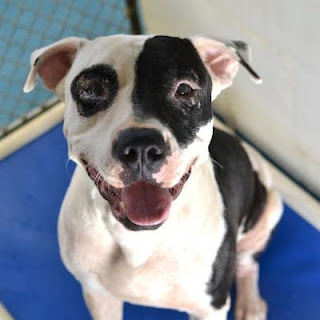Rodney King died recently, but his poignant question – “Can we all get along?” – lives on.
King was the African-American man whose vicious beating by Los Angeles
police officers was captured on video in 1991. His attackers were tried
in 1992, but the all-white jury acquitted three and could not agree on
the fourth. The verdict sparked terrible riots in Los Angeles, leading
to the deaths of 53 people. In the midst of the violence, a distraught
King went on television to plead for unity, or at least civility.
So what does this have to do with dog rescue?
Like every movement, animal rescue is divided in multiple ways. I have been participating in social movements for a long time – since I was 14 and joined protests against the Rocky Flats nuclear weapons manufacturing plant near Denver. (Yes, that dates me.) Since that time I have worked for a number of groups, on a number of issues, as both paid staff and volunteer. I have also studied social movements as an academic for more than 20 years, beginning with undergraduate and graduate research on revolutionary movements in Central America. Divisions in those movements were sometimes literally deadly. A number of prominent leaders were assassinated by their former allies, as was Malcolm X in this country.
Fortunately, at least so far, dog rescuers do not seem inclined to go after each other in such lethal ways. Still, our divisions can be destructive. We spend time criticizing others who are working for the same goals – helping the dogs who need us. To the extent that it focuses on direct service, ours is a less ideologically-driven movement than some, but it still suffers from divisions about all kinds of things, ranging from the mundane (should your dogs eat only raw food?) to the abstract (what kinds of rights do nonhuman animals have, anyway?)
Some divisions matter more than others, and they matter differently. Lots of people have “deal breakers,” issues about which they will not or cannot compromise. This can lead to single-issue politics, on a large scale – the citizen for whom a politician’s position on gun control, the environment, or abortion becomes the only thing that matters. For others, a big picture view trumps any specific issue – they wish that politician had a different position on immigration, for example, but like everything else about her enough to overlook it. Personally, I like to keep my make-or-break issues few and far between, in order to keep the tent big and the conversation expansive.
Perhaps because I’m an academic, I think of these issues in relation to
the split in philosophical ethics between deontological ethics (in which
rules must be followed and principles adhered to regardless of the
cost) and consequentialist ethics (in which the end result is much more
important than the means used to achieve it). Both of these approaches
can be destructive when taken to extremes, and at least in my activist
life, I prefer a pragmatic approach with multiple values and multiple
approaches to achieving common goals
Against this big tent approach is the claim, as someone put it to me a while ago, that “we are more effective when we are all on the same page.” The problem is that the people who say this often mean (sometimes without realizing it) that everyone should be on their page. This kind of unity is domination, the subordination of alternative perspectives for the sake of a “greater good” that those in power have defined. Again, there are parallels in other social movements, notably the ways that women have been told to put aside their own interests for the sake of other goals.
In addition to ideological issues and strategic issues, of course, we are divided by personal concerns, which can be just as compelling (or more so). Asking people to set these aside for the greater good can be as hard – and as much of a power play – as asking someone to compromise a deeply held principle.
The problem is how to get along, as Rodney King would put it, without forcing some people to toe a line set by someone else. How can we establish a unity that is more than skin deep but that respects diverse principles – and makes it possible for people who are personally divided to collaborate when our common goals demand it?
Against this big tent approach is the claim, as someone put it to me a while ago, that “we are more effective when we are all on the same page.” The problem is that the people who say this often mean (sometimes without realizing it) that everyone should be on their page. This kind of unity is domination, the subordination of alternative perspectives for the sake of a “greater good” that those in power have defined. Again, there are parallels in other social movements, notably the ways that women have been told to put aside their own interests for the sake of other goals.
In addition to ideological issues and strategic issues, of course, we are divided by personal concerns, which can be just as compelling (or more so). Asking people to set these aside for the greater good can be as hard – and as much of a power play – as asking someone to compromise a deeply held principle.
The problem is how to get along, as Rodney King would put it, without forcing some people to toe a line set by someone else. How can we establish a unity that is more than skin deep but that respects diverse principles – and makes it possible for people who are personally divided to collaborate when our common goals demand it?
Amazingly, I find myself thinking of the dense and obscure German social
theorist Jurgen Habermas here. I took a seminar on him in graduate
school and spent the entire semester complaining about him (to the
extent that a friend of mine thought his name was “stupid Habermas,” or,
as she put it, “stupid Haagen-Dazs”). However, Habermas left me with a
take-home message about the central role of open communication in any
group that aims to be democratic. Free and open communication is
impossible without proper conditions, which Habermas calls the “ideal
speech situation.” In this situation, every interested party has the
opportunity to speak, be heard, and influence collective decisions. No
one is excluded from the dialogue and no one has the power to silence or
overrule another. The goal of the conversation is to reach consensus –
not a final vote, because people who know they are in the majority have
little motive to listen to minority points of view.
As a graduate student, I thought Habermas was overly abstract and
idealist. I have a feeling I am opening myself to the same criticisms
now. Perhaps the most charitable way to put it is that this thinking is
a work in progress. I am struggling to figure out how we can work
together despite our differences – but that means figuring out what
differences matter (and how much), when we can agree to disagree and
work together for a common goal, and when the differences are so deep
that there is not really a common goal. We like to say that we are all
in it for the animals and that our shared goal is to save lives. There
are many paths toward that goal and many tasks needed to reach it. Even
when we disagree about which is the most important task or the best way
to pursue it, it may still be possible to acknowledge that the people
on another path, or another page, have something valuable to offer.
Recently I was looking for pit bull advocacy groups in the San Diego area who might help someone moving there find an apartment where she can keep her dog. I came across one called Just a Dog Rescue, which has this quotation (from the Dalai Lama) on its home page: “Compassion is the radicalism of our time.” I have seen this before and find it a fascinating political statement. Today I thought about it in terms of our disagreements and judgments. We are all motivated by compassion toward dogs. I often find compassion toward people harder. It is so easy to suspect not just the conclusions but the motives of people with whom we disagree. That suspicion weakens our work together, sometimes fatally. The victims in this case are not movement leaders, but the dogs whose fate is determined by human decisions.
Recently I was looking for pit bull advocacy groups in the San Diego area who might help someone moving there find an apartment where she can keep her dog. I came across one called Just a Dog Rescue, which has this quotation (from the Dalai Lama) on its home page: “Compassion is the radicalism of our time.” I have seen this before and find it a fascinating political statement. Today I thought about it in terms of our disagreements and judgments. We are all motivated by compassion toward dogs. I often find compassion toward people harder. It is so easy to suspect not just the conclusions but the motives of people with whom we disagree. That suspicion weakens our work together, sometimes fatally. The victims in this case are not movement leaders, but the dogs whose fate is determined by human decisions.
In 1975, the Salvadoran poet Roque Dalton was assassinated by former comrades in that country's revolutionary movement. Dalton’s most famous poem ends with a beautiful vision of solidarity, made more poignant by his tragic fate:
I believe the world is beautiful
and that poetry, like bread, is for everyone.
And that my veins don’t end in me
but in the unanimous blood
of those who struggle for life,
love,
little things,
landscape and bread,
the poetry of everyone.


















